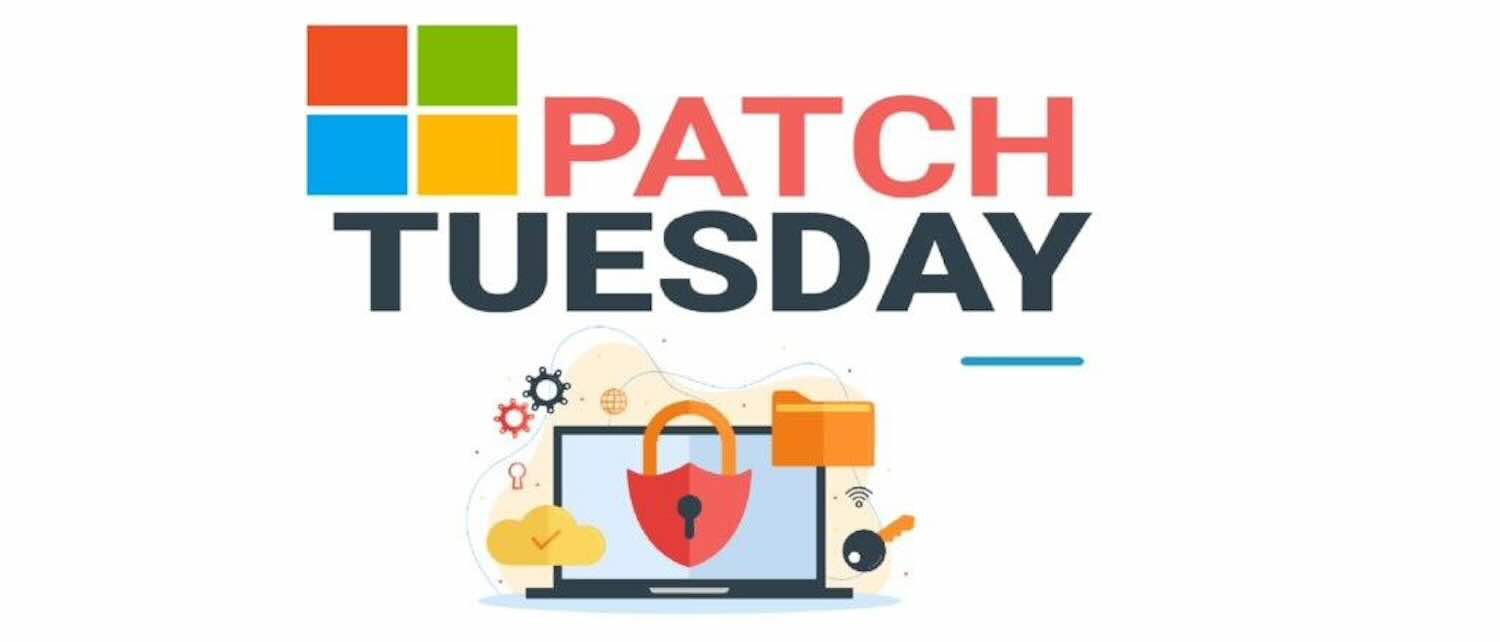Sự kiện "Patch Tuesday" là một hành động định kỳ hàng tháng của Microsoft, trong đó họ cung cấp các bản vá bảo mật và các cập nhật cho hệ điều hành Windows và một số phần mềm khác của họ. Thông thường, sự kiện này diễn ra vào một ngày thứ Hai cụ thể của mỗi tháng (thường là thứ hai đầu tiên) và đã trở thành một phần quan trọng trong chiến lược bảo mật của Microsoft.
Những bản vá trong Patch Tuesday được thiết kế để sửa các lỗ hổng bảo mật, cải thiện tính ổn định và bảo mật của hệ điều hành, và đôi khi cung cấp các tính năng mới. Patch Tuesday giúp đảm bảo rằng người dùng có thể duy trì hệ thống của họ ở mức an toàn và ổn định nhất thông qua việc cập nhật định kỳ.
Mới đây Microsoft đã phát hành một thông cáo báo chí kỷ niệm 20 năm kể từ sự kiện khởi đầu của Patch Tuesday và điểm lại quá trình phát triển của sự kiện này.

Vào tháng 10 năm 2003, Microsoft đã khởi động sự kiện Patch Tuesday , trong một bài viết trên blog, Phó Tổng giám đốc quản lý dự án và dịch vụ cũng như giao hàng Windows, John Cable, đã tổng kết lịch sử cung cấp các bản cập nhật bảo mật định kỳ cho Windows.
Bài viết mô tả rằng ý tưởng về sự kiện Patch Tuesday xuất phát từ ngày 15 tháng 1 năm 2002, khi người sáng lập Microsoft Bill Gates gửi một bản ghi chú tới tất cả nhân viên của công ty.
Trong bản ghi chú này, Gates đưa ra kế hoạch Tin cậy Tính toán (Trustworthy Computing) nhằm khuyến khích công ty tạo ra phần mềm an toàn hơn và phương pháp cập nhật tốt hơn.
Microsoft chia quá trình phát triển các hoạt động của Patch Tuesday thành 4 giai đoạn: 2003-2007, 2008-2012, 2013-2017 và 2018 đến nay.
Những bản vá trong Patch Tuesday được thiết kế để sửa các lỗ hổng bảo mật, cải thiện tính ổn định và bảo mật của hệ điều hành, và đôi khi cung cấp các tính năng mới. Patch Tuesday giúp đảm bảo rằng người dùng có thể duy trì hệ thống của họ ở mức an toàn và ổn định nhất thông qua việc cập nhật định kỳ.
Mới đây Microsoft đã phát hành một thông cáo báo chí kỷ niệm 20 năm kể từ sự kiện khởi đầu của Patch Tuesday và điểm lại quá trình phát triển của sự kiện này.

Vào tháng 10 năm 2003, Microsoft đã khởi động sự kiện Patch Tuesday , trong một bài viết trên blog, Phó Tổng giám đốc quản lý dự án và dịch vụ cũng như giao hàng Windows, John Cable, đã tổng kết lịch sử cung cấp các bản cập nhật bảo mật định kỳ cho Windows.
Bài viết mô tả rằng ý tưởng về sự kiện Patch Tuesday xuất phát từ ngày 15 tháng 1 năm 2002, khi người sáng lập Microsoft Bill Gates gửi một bản ghi chú tới tất cả nhân viên của công ty.
Trong bản ghi chú này, Gates đưa ra kế hoạch Tin cậy Tính toán (Trustworthy Computing) nhằm khuyến khích công ty tạo ra phần mềm an toàn hơn và phương pháp cập nhật tốt hơn.
Chúng tôi đang thiết kế một phương pháp tiếp cận mới nhằm giảm đáng kể số lượng các sự cố này trong phần mềm do Microsoft, các đối tác và khách hàng của Microsoft tạo ra. Chúng tôi cần cho phép khách hàng tự động lấy các bản vá sửa chữa này để người dùng không phải lo lắng quá nhiều và về cơ bản đảm bảo tính bảo mật của hệ thống.
Microsoft chia quá trình phát triển các hoạt động của Patch Tuesday thành 4 giai đoạn: 2003-2007, 2008-2012, 2013-2017 và 2018 đến nay.
Nguồn https://blogs.windows.com/windowsex...lecting-on-20-years-of-windows-patch-tuesday/2003–2007
- Patch Tuesday updates begin. They introduce supporting patch management processes, including Windows Update and Microsoft Update services.
- Windows Vista and later Windows 7 are released. Both incorporate enhanced security features, User Account Control (UAC), Windows Defender and improved firewall capabilities.
2008–2012
- New out-of-band (OOB) updates address imminent threats like the Conficker worm vulnerability.
- Security Development Lifecycle expansion provides a robust set of best practices and guidelines for developing secure software.
- New tools help organizations deploy and assess the status of security updates. These include Windows Server Update Services (WSUS) and the Microsoft Baseline Security Analyzer (MBSA).
- Windows 8 features improve security measures. We welcome Secure Boot, Windows Defender enhancements and further developments in User Account Control (UAC).
2013–2017
- Windows 10 is introduced. It represents a fundamental shift towards a “Windows as a service” model. It’s accompanied by the inaugural release of the Windows update history pages, more commonly known as release notes.
- New security enhancements aim to provide stronger protection against malware, unauthorized access and credential theft. Device Guard, Credential Guard and Windows Hello are developed and released.
- Windows Update for Business goes live. It allows organizations more control over when and how to deploy Windows updates.
- The quality and reliability of security updates continue to be the focus of the conversation. “In each new monthly quality update, we add another layer of security, one that tracks emerging and changing trends in malware and viruses” (John Cable, September 20, 2017).
- We take proactive steps to bolster transparency and align with General Data Protection Regulations (GDPR). Organizations gain the confidence they need to keep devices up to date.
2018–Present
- An industry-wide collaboration begins around proactively patching firmware. It follows a public disclosure of Spectre & Meltdown hardware vulnerabilities. Monthly quality updates serve as a tool to expand microcode updates to devices.
- The use of machine learning optimizes Windows update experiences as proactive measures across Windows updates continue. AI becomes a tool to serve Windows 10 feature updates.
- Rigor and transparency grow: “The scale and diversity of the Windows ecosystem requires us to take a data-driven approach to quality and to leverage automation for testing, validation and distribution” (Mike Fortin, former CVP, December 10, 2018). The discussion of quality validation efforts via Patch Tuesday includes the Pre-release Validation Program (PVP), Depth Test Passes (DTP), Monthly Test Passes (MTP), the Windows Insider Program (WIP) and the Security Update Validation Program (SUVP).
- Windows release health dashboard offers everyone a single pane of glass to view known issues across feature and monthly quality updates.
- In response to 2020’s COVID-19 emerging pandemic, remote work-related tools receive greater focus. We address vulnerabilities in Remote Desktop Services and Microsoft Teams, as well as extend End of Support for certain active versions of Windows.
- Known Issue Rollbacks (KIRs) help devices quickly return to a productive state if inadvertently impacted by an update issue.
- In August 2022, the newly announced safeguard holds with Windows Update for Business deployment service help organizations with rolling out updates.
- That same year, Unified Update Platform (UUP) on premises is available for commercial organizations as a public preview. Integrated with Windows Server Update Services (WSUS) and Configuration Manager, it simplifies quality and feature update deployment. It hits General Availability in 2023.
- Windows Autopatch emerges as a growing part of the Patch Tuesday experience.
- Microsoft launches the Secure Future Initiative across Microsoft to pursue our next generation of cybersecurity protection.
BÀI MỚI ĐANG THẢO LUẬN

